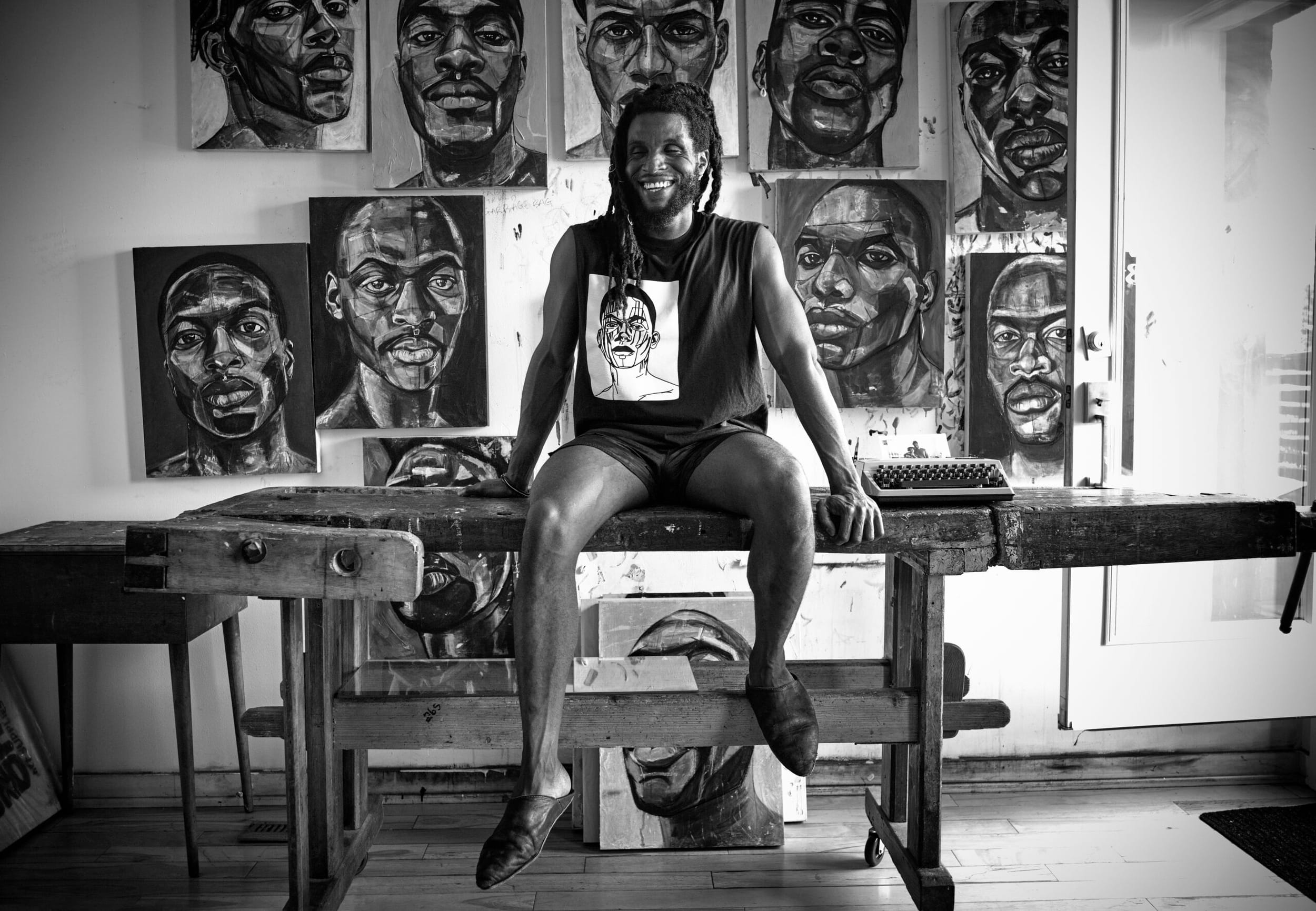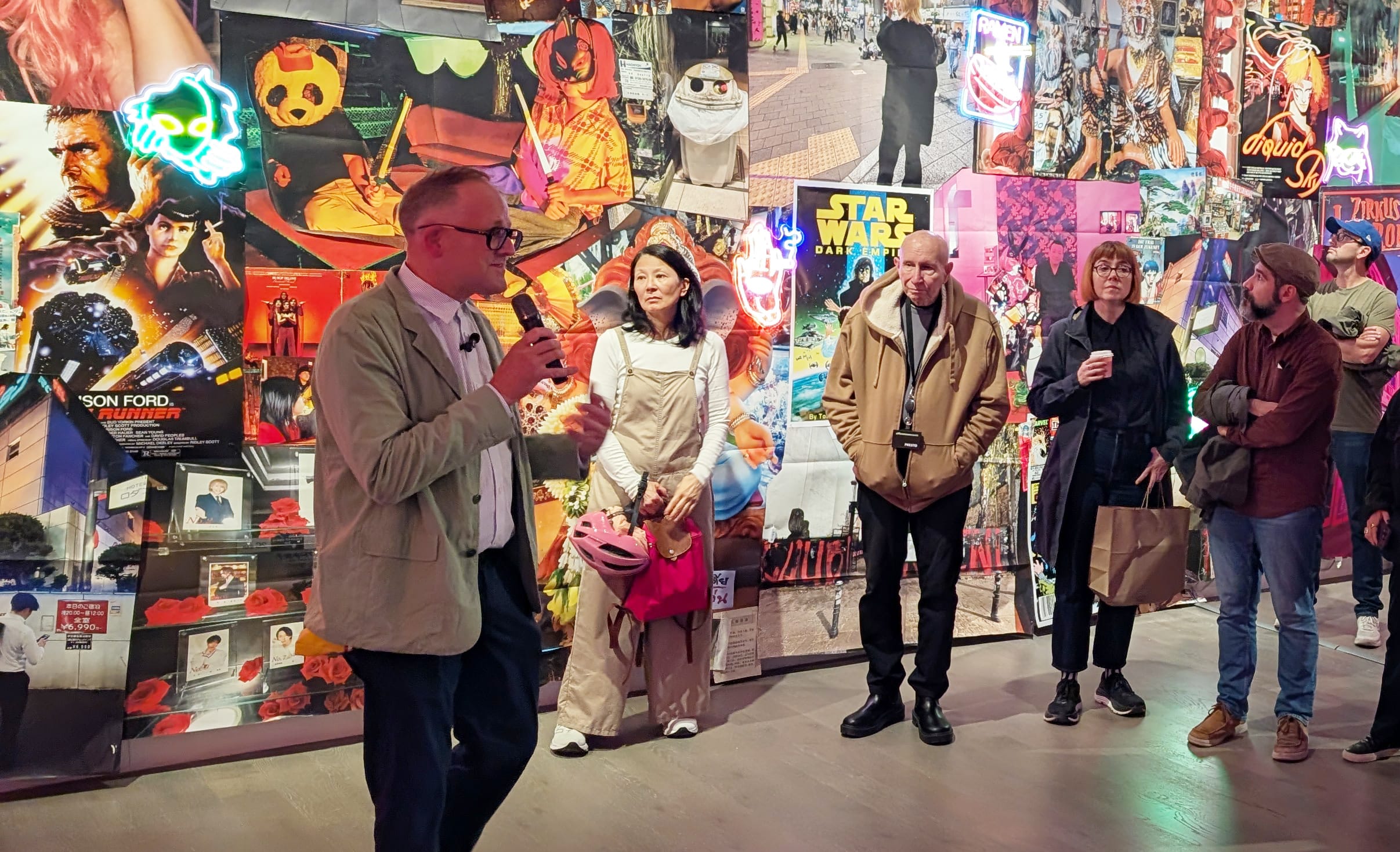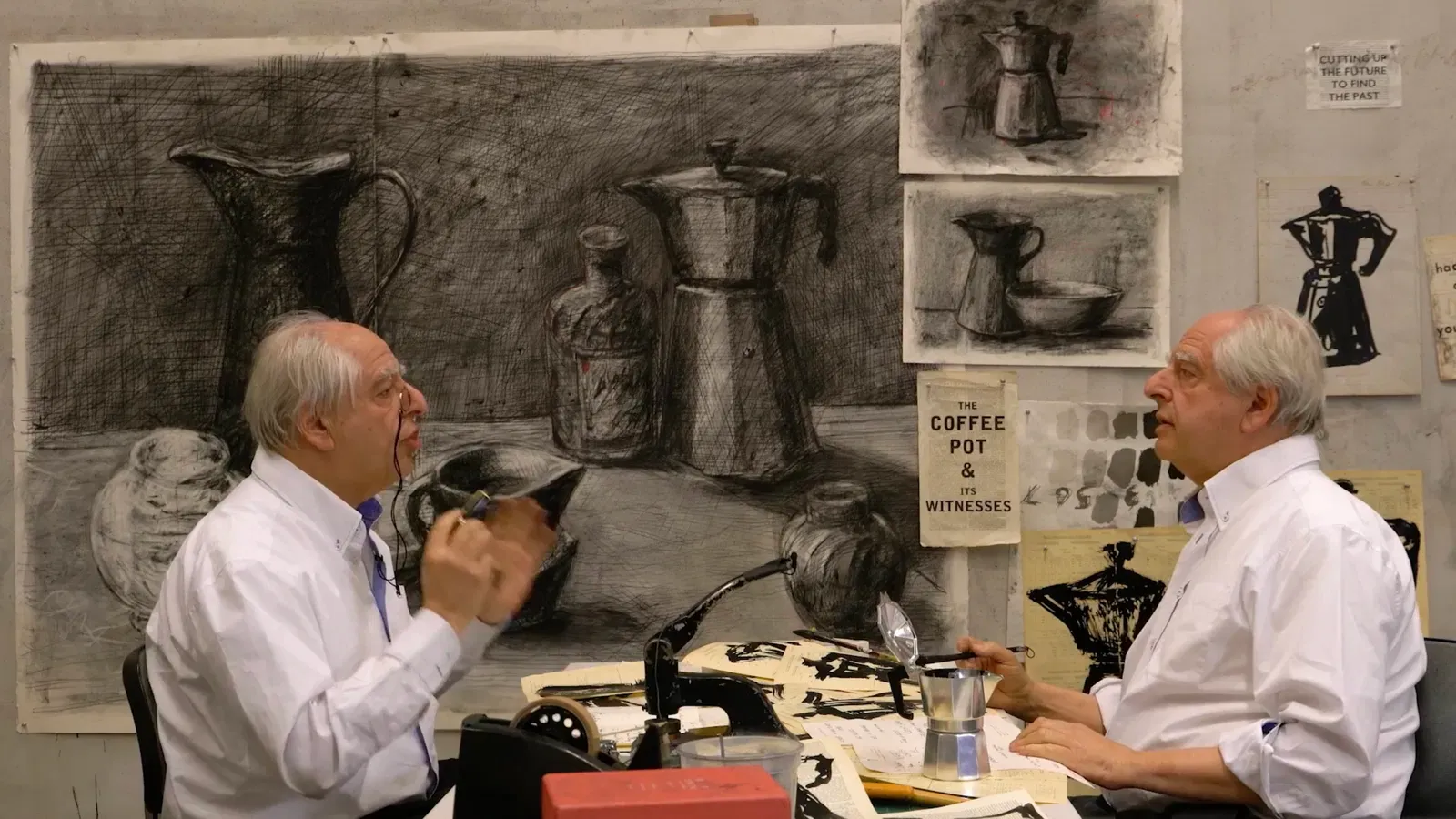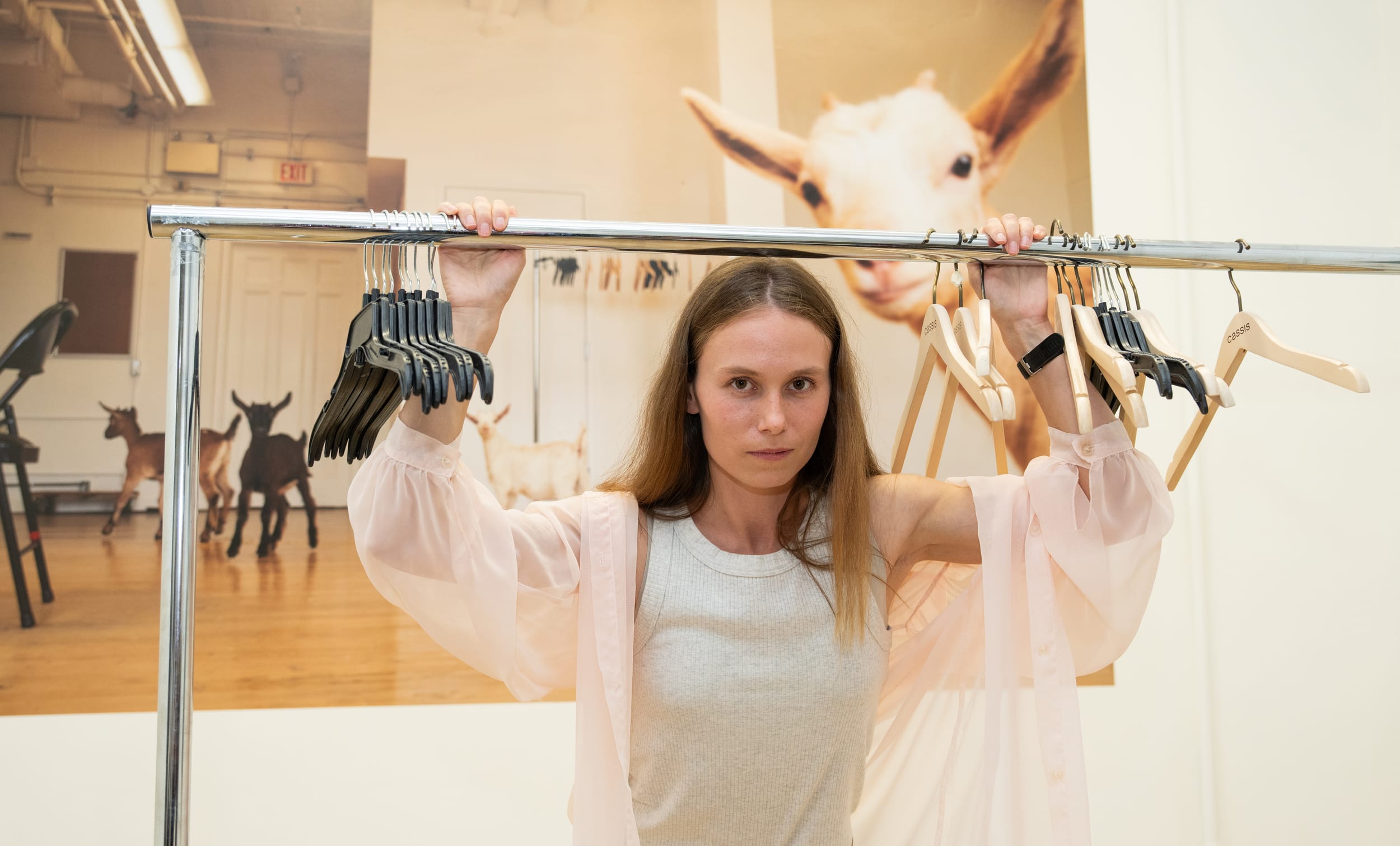Windows Into Strange Worlds
Often blurring the line between documentary and dreamscape, Tracey Snelling’s sculptures, installations, and other works—now showing at Koffler Arts—cast the viewer in the role of voyeur.
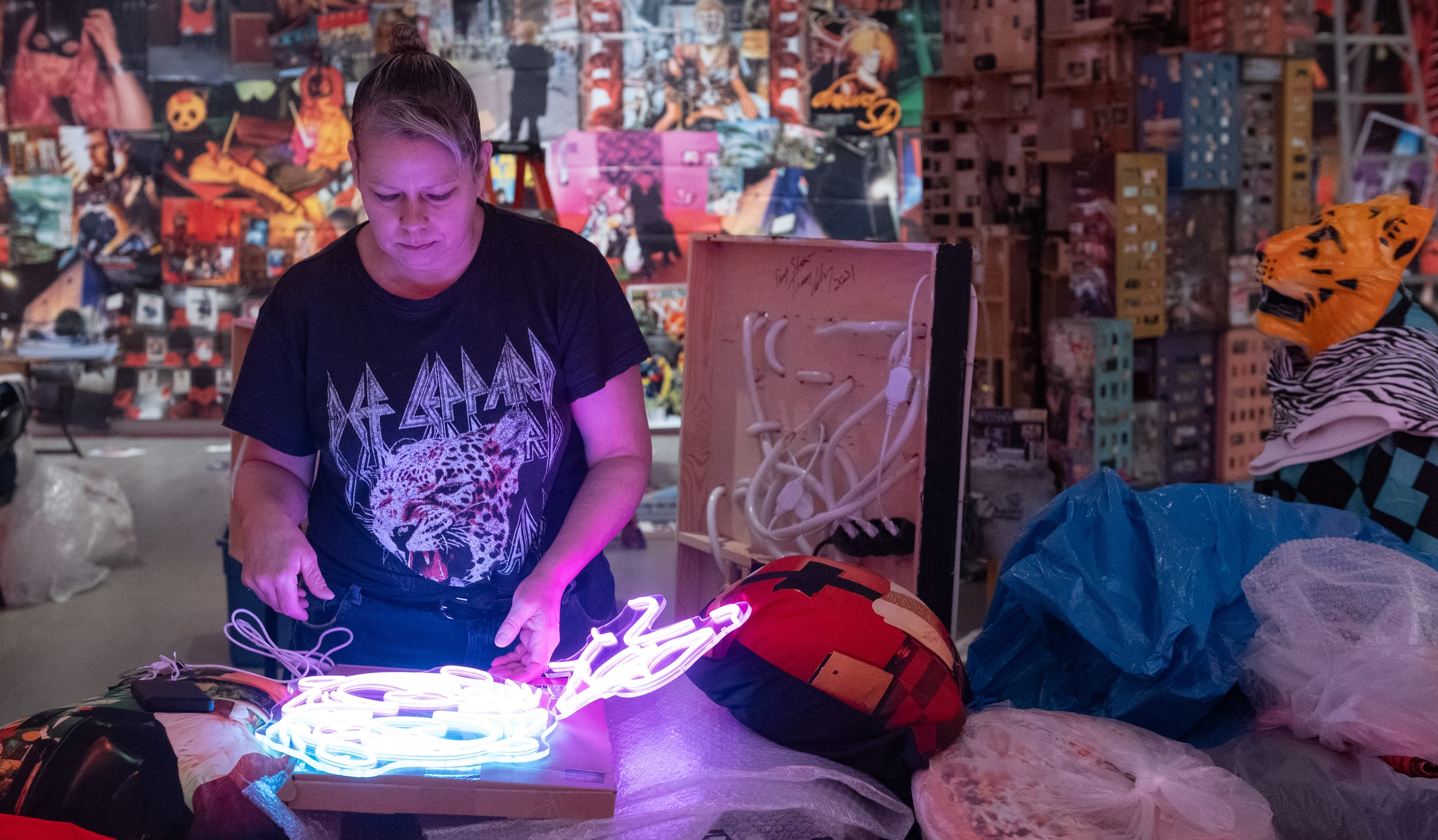
Tracey Snelling builds urban spaces that sprawl and flicker with an almost organic intensity. Whether it’s her intricately constructed miniatures of high-rises, motels, and tenement blocks, often based on real places and inset with videos and photos that hint at the dramas inside, or her playful room-scaled installations, it’s as though she’s forcing you to approach her work in the role of voyeur.
Based in Berlin since 2015, Snelling has spent more than two decades creating semi-fictional cities and spaces out of real-world details, drawing on time spent in places like Shanghai, Tokyo, New Orleans, and Mexico City, as well as her home state of California. Her work spans sculpture, photography, video, performance, and social research, often blurring the line between documentary and dreamscape, memory and fantasy.
For the first time, Snelling brings her Lynchian-flavoured world building to Canada, with her solo exhibition Intergalactic Planetary running at Koffler Arts until December 14. Drawing on the full breadth of her practice, the show features a life-size installation of a Tokyo love-hotel room, her totemic mixed-media sculpture Shanghai/Chongqing Hot Pot Mixtape—a colossus of apartment blocks densely clustered together—and a range of video, performance, and photographic works. On site, the 55-year-old artist has also created another in her immersive Clusterfuck series of collage installations (in this case, Interplanetary Clusterfuck).
In the following conversation with Arcade, Snelling reflects on the intuitive nature of her practice, the comforts of looking into strangers’ windows, and why she believes “we’re all freaks when we’re alone.”
This is your first time exhibiting in Canada and by this point you have more than two decades of work to draw from. How did you approach the show?
Matthew Jocelyn [Koffler Arts’ General Director] saw my solo show in Berlin last year that covered many years of my work. I had a life-size love-hotel room, videos, and sculpture—he really liked what he saw and wanted something similar. But, of course, we’re also dealing with crating and shipping and all that, so perhaps this show is not as sculpture heavy as the one in Berlin.
I do have a large practice with video, performance, and life-size installations, and photography is where I actually started so I feel like everything comes together with this show, and is a good overview of almost everything I do.
Why name it for the Beastie Boys song?
First of all, I love the Beastie Boys, and I listen to them a lot if I go for a walk or run, or I’m at the gym. I just loved the title and somewhere along the line wanted to use it. “Intergalactic Planetary” makes me think of a global mix of everything thrown together, which is what the Clusterfuck [series] is, and what most of my work is like. There’s a piece called Mexicalichina that’s in the show, it’s a combination of Mexico, China, and California, which illustrates this global mix. The song is a playful way to reference them.
It does get at how your work is so evocative—there’s a quality to the places you are recreating that is both very particular, which comes across in their meticulousness, but also generic or mythical, such that they are almost of unknown origin.
It depends on the work I make. Sometimes I’ve made motels, a house or a bar and those are maybe more American and based on a particular place. But then a lot of the places could be these more generic places that are more mundane—I like taking mundane places and elevating them because I find beauty in it.
I don’t usually plan what I’m going to do conceptually—except maybe when I’m planning a whole show—usually I just do what I’m drawn to. For this show I’ve included Mäusebunker, my sculpture based on the brutalist building in Berlin that was once used for animal testing. I saw an image of it and read that they were going to tear it down, and there was a petition to save it. I had never heard of this place and thought, “What the hell is this?” I rode my bike there, checked it out, and decided I had to build it.
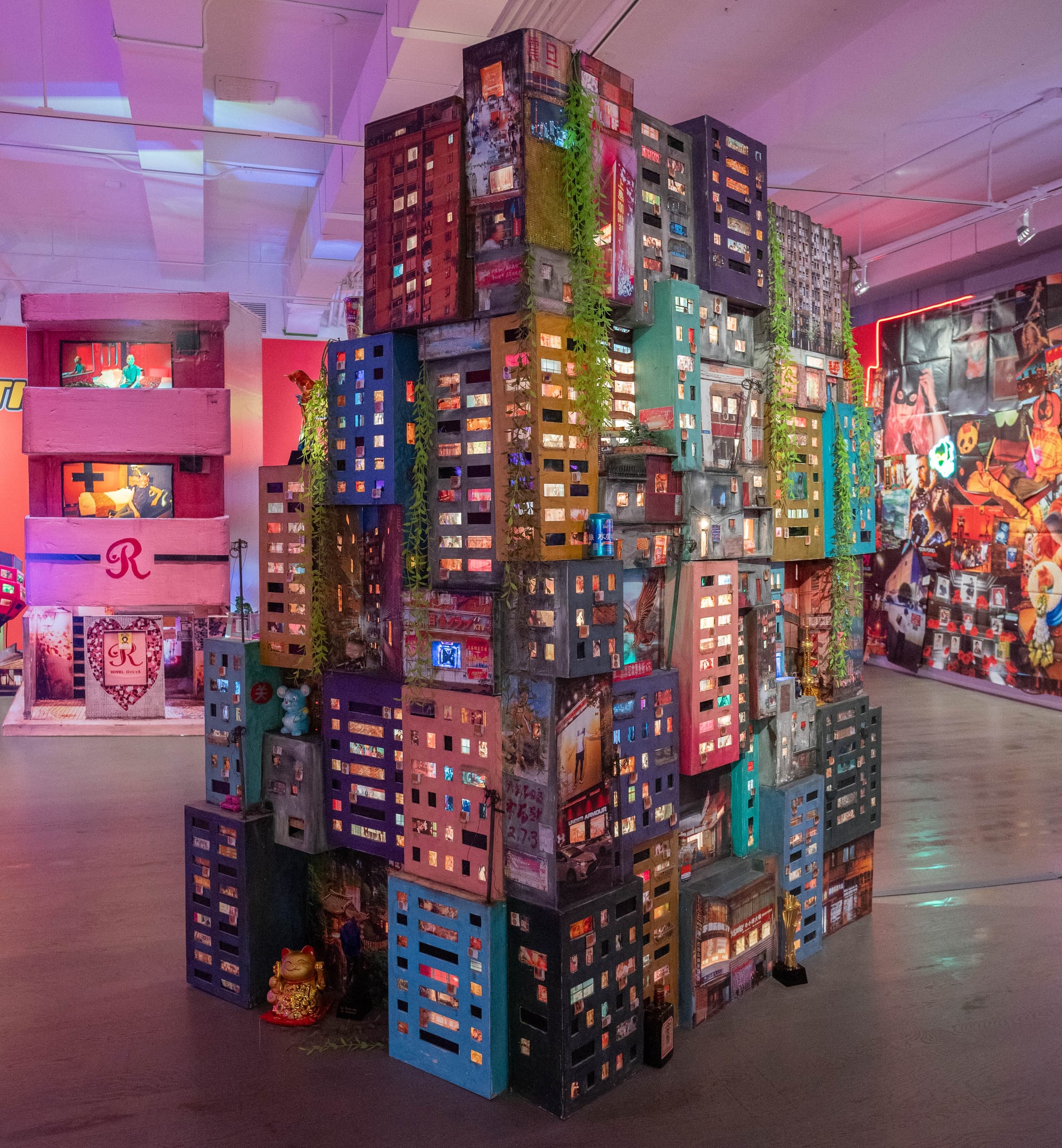
Many of the spaces and places you create, or in many cases recreate, aren’t necessarily appealing or beautiful in a conventional architectural sense, but I think they capture how a building or space accrues memory and meaning over time, a feeling or spirit, and that’s where the poetry is in your work.
That’s how I feel, it’s more about the place and the people. I mean, the building is interesting and I love architecture even though I haven’t studied it, but a new building is not as interesting to me. It’s really about the history of the place. How does it feel to be there? Whenever possible, I visit a place if I’m going to build it. If I’m doing a residency in a place like Tokyo or in China, I will wander around and photograph and take video, and then that feeds what I end up building.
Urban landscapes are so central to your work, and you seem to travel frequently, with shows and residencies all over the place—Shanghai, Paris, Tokyo, New Orleans, Rotterdam. I’m wondering where your eye tends to travel when you first encounter a new city.
I like more chaotic places, I like brutalist buildings. I am usually not so attracted to the very wealthy areas—probably there are just as many interesting things going on, but the drama maybe is covered up with a sheen. Everything’s made to look nice. Maybe it could be a project at some point, but I am really interested in how buildings wear, and more crowded places. In a way, I feel like I’m a sociologist without a degree that is traveling around.
I used to be quite shy and then I realized that being an artist gave me an excuse to approach people and ask questions, to find out more. When I was in Tokyo, I did a love hotel project, bringing people to love hotels and interviewing them about love and relationships. That was a pretty new thing for me and it was wonderful that so many people agreed to do it. I then had the idea to also do a project on male host clubs, which I knew nothing about. I was able to interview some of the hosts and shoot in the club without the clients around. It’s all just personal curiosity, really.
Voyeurism is one of the core themes across your work, how in many of your sculptures we’re invited to look inside these tiny apertures, like an apartment or motel room window, to witness these little dramas playing out from peoples’ lives. Where does this interest in voyeurism come from?
When I was younger, I was simply curious, like, how are other people going through the world and what are they thinking? I remember walking around at night and seeing through the windows of places that didn’t have their curtains drawn, wanting to know what’s happening inside there, wanting to know the stories.
So if I make this sculpture that has all these windows and this drama going on inside, you’re allowed in a way to look at it. I mean, I’m not like a true voyeur or anything, I just want to imagine what’s happening.
Flipping things around, are we to look at the people inside those dramas as exhibitionists in some way?
I’m not really interested in exhibitionists, I find it more interesting when people aren’t necessarily concerned with being seen, or might not even be aware that they’re being seen.
In 2018 I did a show in Berlin with these life-sized rooms. There was a living room and a bedroom, and then I orchestrated all these performances to happen in the rooms. The idea behind the performances was that, when we are alone, we’re all really freaks at heart.
When I was growing up I noticed how people wanted to present themselves as being normal. I was into new wave and punk in high school, and I felt slightly outside the mainstream. I realized that maybe people hide their more unique, different characteristics, but then they go home and do something really strange. I like that. I like the idea that everyone could be doing weird things and we don’t know what their weird thing is.
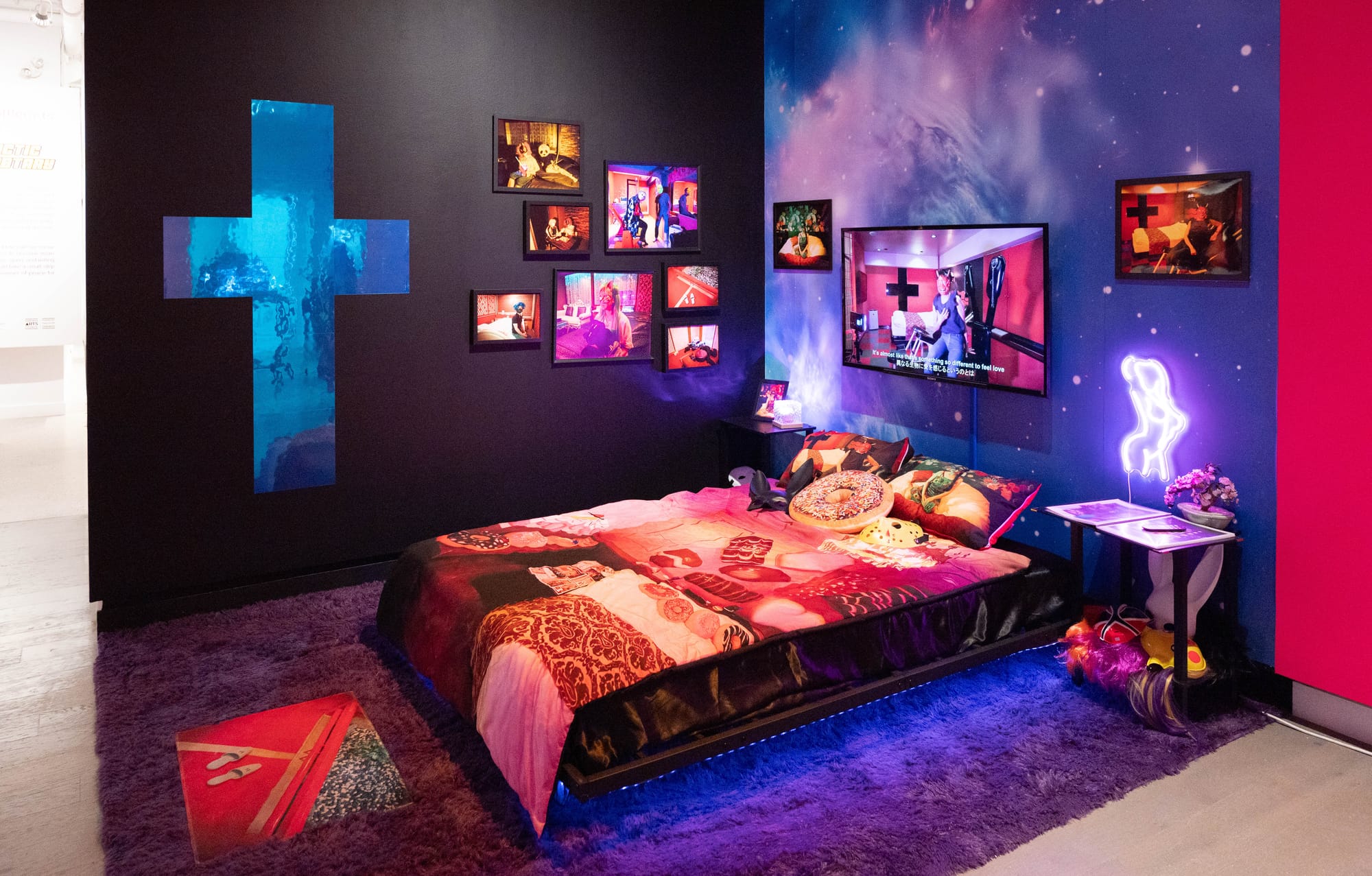
I was going to flag something you’d said in another interview, that some of your performances are based “on my idea that we’re all freaks when we’re alone,” and how our private behaviours are a mix of the strange, beautiful, and the mundane. You went on to say “It comforts me to think that everyone’s this way—I felt so weird when I was growing up, and then I realized we all are strange.” It’s like we’re getting access to all these private rituals.
With the sculptures, I try to show what the actual people who live there might be doing. But when I’m thinking about performances, sometimes the weirder the better.
You have cited many filmmakers that have influenced you, but I get the impression that you wouldn’t object to your work being described as Lynchian.
Oh, I love David Lynch. He was one of the people I would’ve liked to collaborate with in any kind of way, but I never had the chance to meet him. When I was in college, I saw Eraserhead, and I was just really obsessed with him for a bit. And my favourite movie is Wild at Heart with Nicolas Cage. I like Lynch’s earlier films because they were still grounded in some realism but then had these weird twists, whereas his later films sometimes were too far out there for me.
I love Blue Velvet, how it looks like you’re in the middle of suburbia, but there’s all this twisted stuff going on underneath. And then as a person he just seemed so nice and approachable.
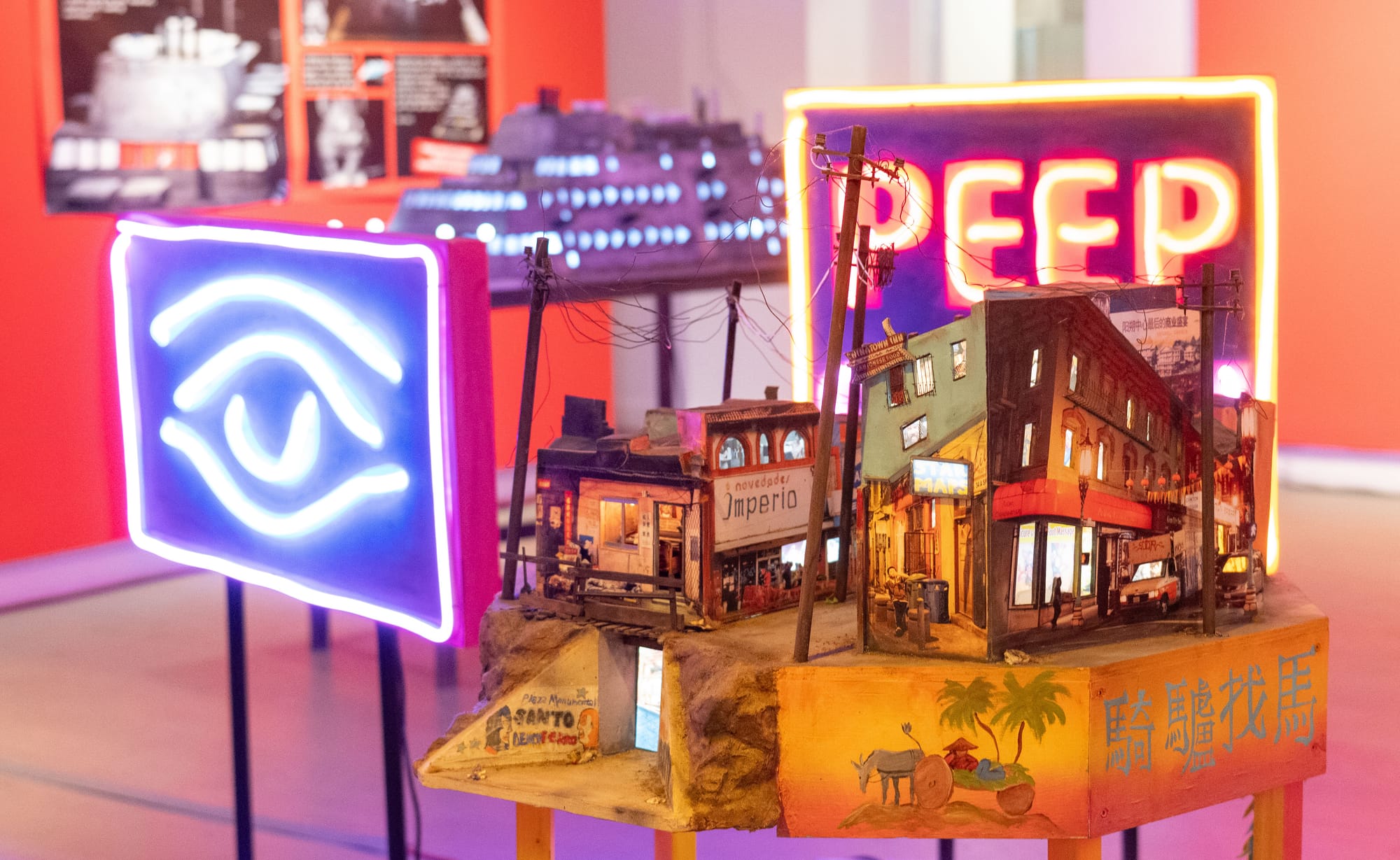
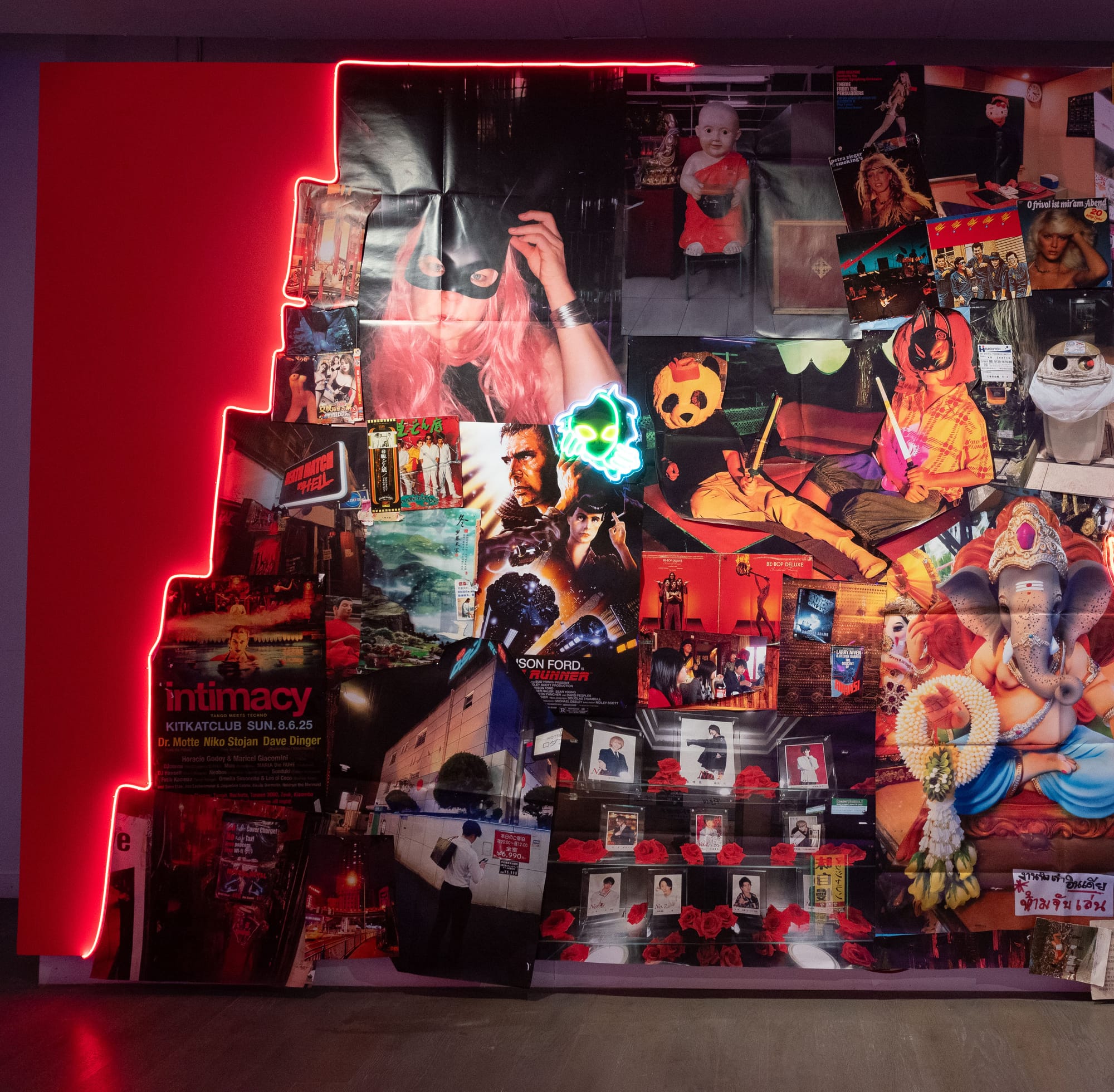
At left, Snelling’s sculpture Mexicalichina (mixed-media, 2011) in foreground; at right, her collage Intergalactic Clusterfuck as shown at Koffler Arts. (Photos: Henry Chan)
You once said that you don’t really analyze your own work. Is that still true?
I try to work very intuitively, but it depends. I might be attracted to a building like the Mäusebunker and then decide to build the Mäusebunker, so I will do research and spend time thinking about it, and when I’m making videos I ask myself what do I want to say with this. So there will be a starting thought, but it’s not like this planned out thing. Sometimes I build something and I look at it after and I think, “Oh, where did this come from?”
Definitely with a piece like One Thousand Shacks, I’m saying something. It was an image I came across while doing this meditation visualization. It popped up in my head—then I wrote it down and decided to build it. It’s about global poverty. I didn’t set out trying to think of a work about global poverty, the image just came to me, and then I started.
One Thousand Shacks is a good example of how your interests have evolved over your career, with a more overt look at an issue like social housing, or more improvised forms of housing.
I’ve always been interested in helping people. I used to volunteer in Oakland at a shelter for unhoused families and worked with kids and teens there doing art classes. At some point I was thinking I want to help people, but I also want to do art—do these even go together and how? I figured I really love making art so I’m going to do that; that in itself can be a positive thing to do in the world. It was only maybe in the last 10 or 15 years that I realized I can use my work to say something that brings attention to social causes I’m interested in. And that’s what I’m really interested in doing now.
Meanwhile, something like the “Clusterfuck” series seems like this perfectly little container in which you can do whatever the hell you want, based more on free association.
It’s very freeing.The sculptures I make are so intense and some of the latest ones, like Vele di Scampia [based on the building in Naples] are so difficult to build that as I’m building it I’m kind of unravelling in a way. So, to just be able to pull together all these images and objects, and immediately start assembling it, that feels really great. It’s just another way of working that allows me some freedom and to express things differently.
Intergalactic Planetary runs at Koffler Arts until December 14, 2025.


